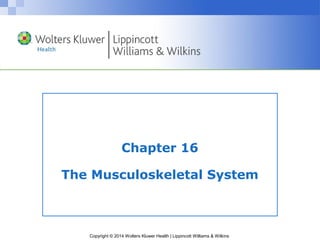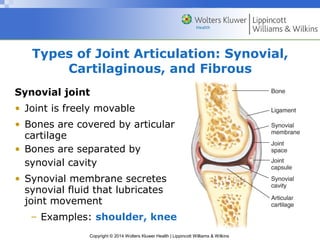The document describes the musculoskeletal system, including:
- Types of joints (synovial, cartilaginous, fibrous) and examples of each.
- An overview of synovial joints, their shapes that allow different movements, and examples.
- Guidelines for examining the major joints, including inspection, palpation, and range of motion tests.
- Anatomy and assessment techniques for specific joints like the shoulder, wrist/hand, spine, hip, knee, and ankle.



































